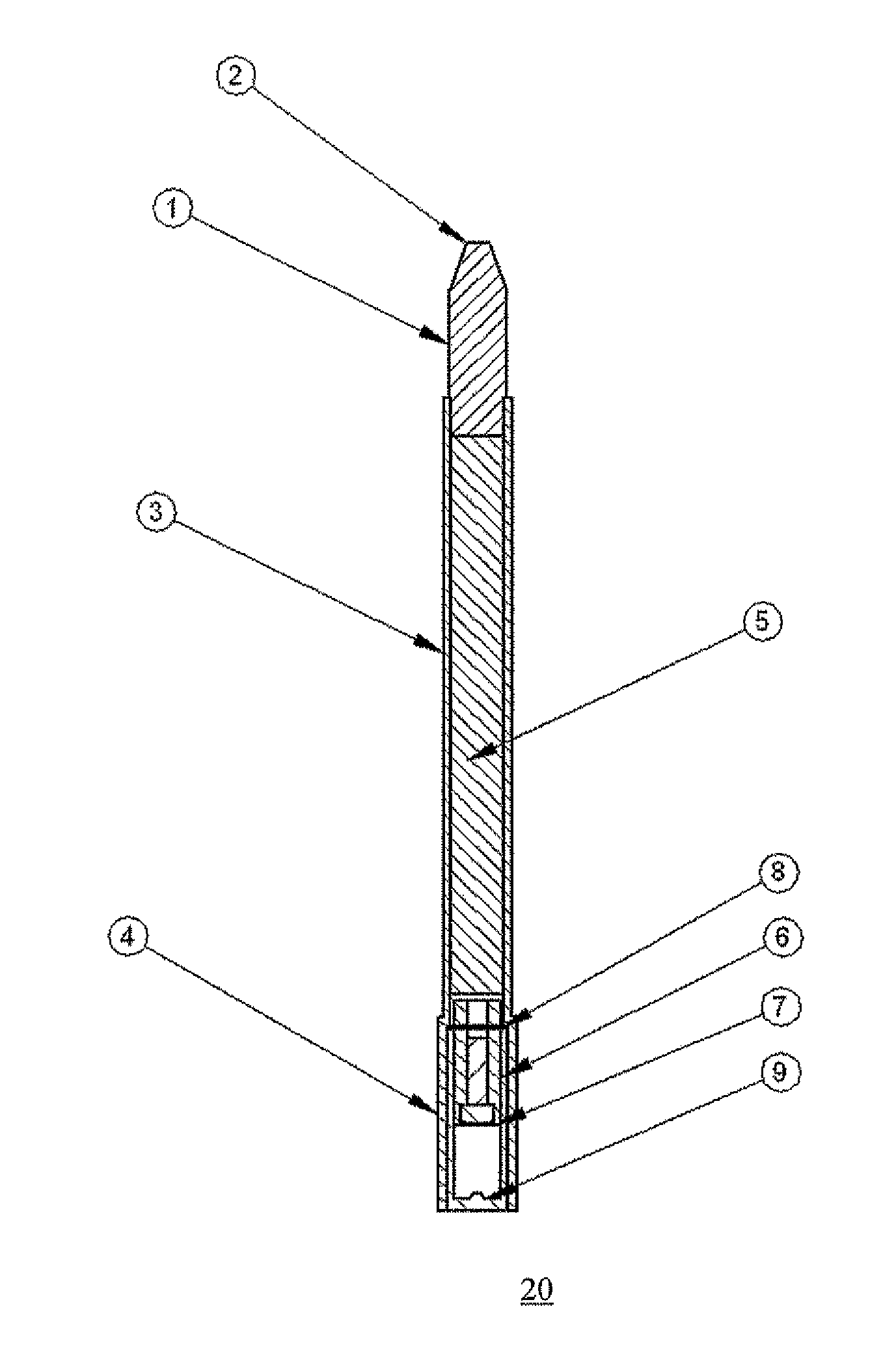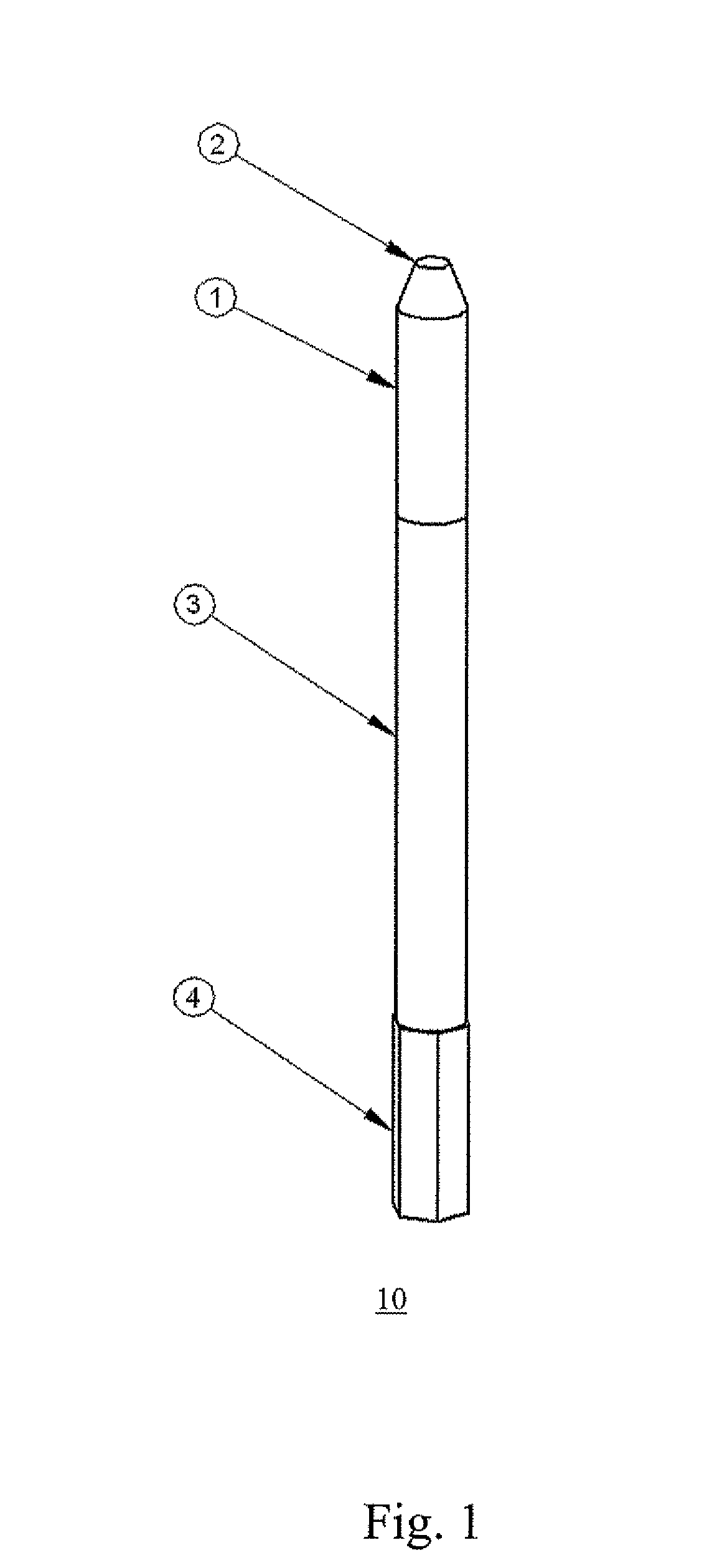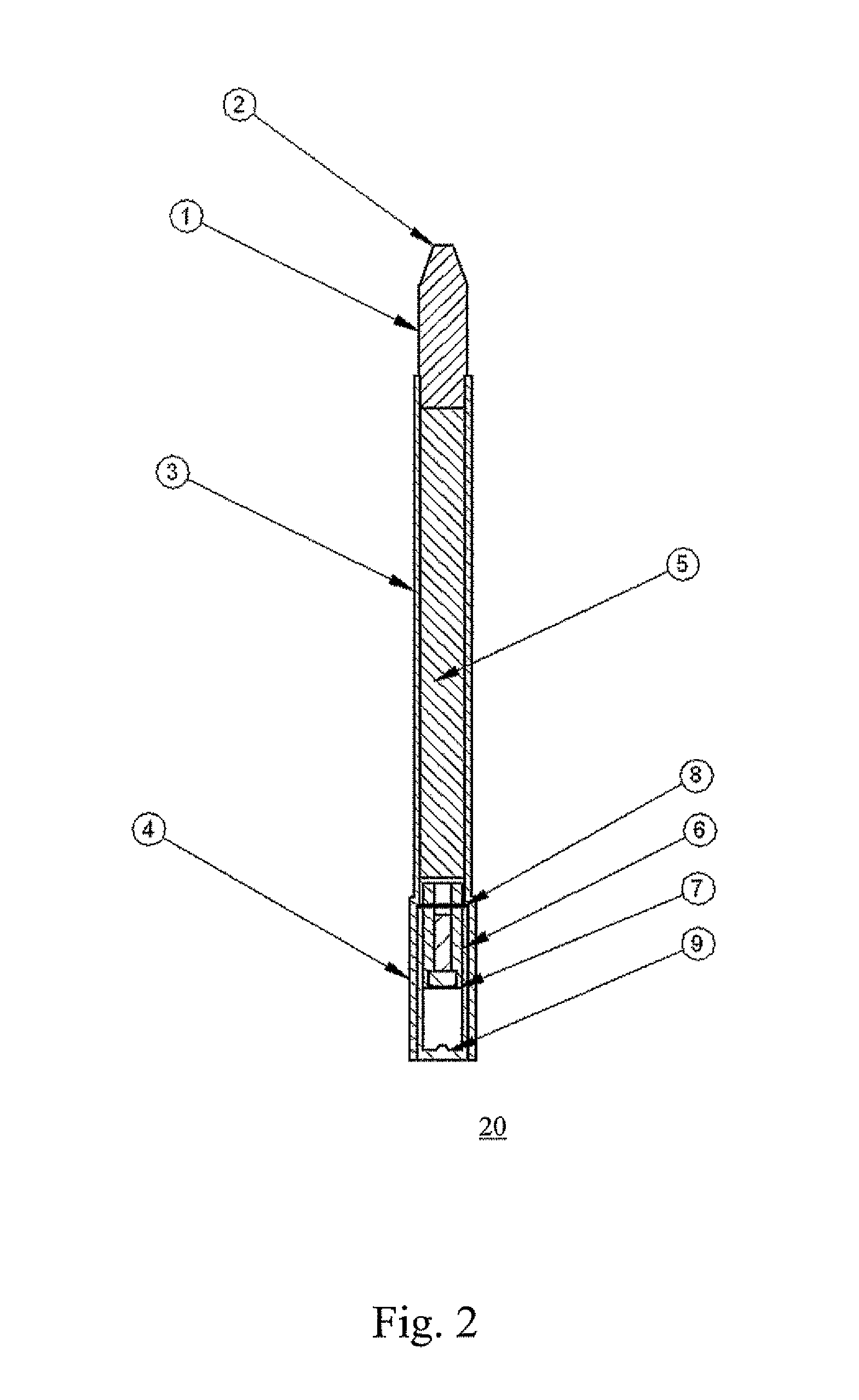Mine defeat system and pyrotechnic dart for same
a technology of pyrotechnic darts and mine defeat systems, which is applied in the direction of offensive equipment, ammunition fuzes, transportation and packaging, etc., can solve the problems of complex timing of fuel-air cloud initiation, inability to clear mines submerged underwater or in surf zones, and inability to clear mines. to achieve the effect of increasing velocity
- Summary
- Abstract
- Description
- Claims
- Application Information
AI Technical Summary
Benefits of technology
Problems solved by technology
Method used
Image
Examples
example 1
Composite Propellant without Seawater
[0069]A composite test body was placed in the center perforation of a simulated TNT mine with the end of the article having the closure and the four radial holes inserted first. About 0.4 second after the initial ignition of the booster pellet, smoke was observed to appear out of the simulated mine. Over a period of about 1.2 seconds, the smoke was observed to steadily increases in quantity and density, and gas venting could be heard. Almost immediately, flame, having the color of burning TNT, became visible above the top of the simulated mine. About a quarter second later, droplets and / or particles began to be ejected, which may have been non-burning droplets or pieces of TNT broken off from the crystalline fingers along the center hole of the TNT.
[0070]For about 4 seconds more, the intensity of the burning increased, as the hissing of gas escaping the penetrator continued. More particles and / or droplets were entrained in the exhaust products an...
example 2
Composite Propellant with Seawater
[0074]Almost immediately after the ignition of the booster pellet, the simulated mine was briefly lifted up a fraction of an inch, likely because of a sudden localized pressure that pushed on the bottom of the simulated mine as the gas initially vented from the burning composite propellant. The water column above a bubble of the gas would have momentarily trapped the gas, causing bottom of the simulated mine to bulge, resulting in the movement. The simulated mine then dropped back into its original position when the pressure equalized, returning the bottom to its original shape. It is not clear whether the momentary change in shape damaged the seal of the simulated mine.
[0075]For about 1 second, bubbling was heard, as exhaust gas vented through the water in the absence of observable smoke or flame. It is believed that the sea water absorbed any smoke and most of the heat generated by the burning propellant. Shortly thereafter, smoke and / or steam beg...
example 3
Ti / B Intermetallic without Seawater
[0081]The reaction rate of the Ti / B fill was determined to be approximately 1.0 inches per second (ips). At that rate, the entire column of fill was completely reacted within the first three to four seconds of the test. Thus, any combustion occurring after four seconds in each test of the intermetallic composition should be attributed to the residual reaction heat and the autocatalytic decomposition of the TNT.
[0082]Upon ignition of the Ti / B in the penetrator test body, the TNT ignited, and very vigorous combustion was observed immediately after penetrator ignition. Burning incendiary drops of molten TNT were thrown onto the test stand. Very violent burning continued for first 20 seconds after ignition, when the flames died down to a gentle “candle-like” flicker 1 to 2 inches above the simulated mine lip. Approximately 40 seconds later, i.e., about one minute into the test, the intensity of the flames increased, reaching four to six inches above th...
PUM
 Login to View More
Login to View More Abstract
Description
Claims
Application Information
 Login to View More
Login to View More - R&D
- Intellectual Property
- Life Sciences
- Materials
- Tech Scout
- Unparalleled Data Quality
- Higher Quality Content
- 60% Fewer Hallucinations
Browse by: Latest US Patents, China's latest patents, Technical Efficacy Thesaurus, Application Domain, Technology Topic, Popular Technical Reports.
© 2025 PatSnap. All rights reserved.Legal|Privacy policy|Modern Slavery Act Transparency Statement|Sitemap|About US| Contact US: help@patsnap.com



